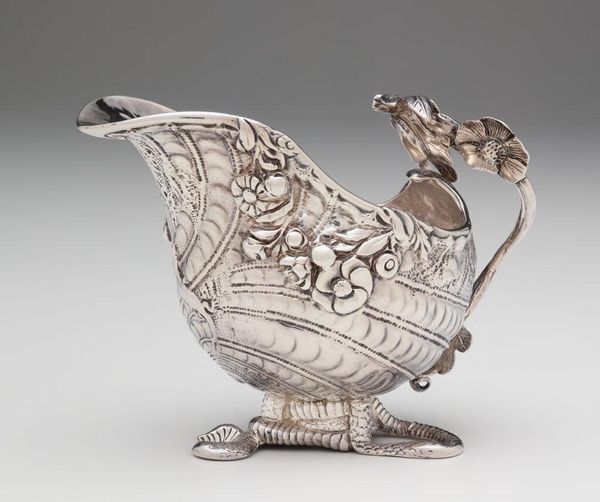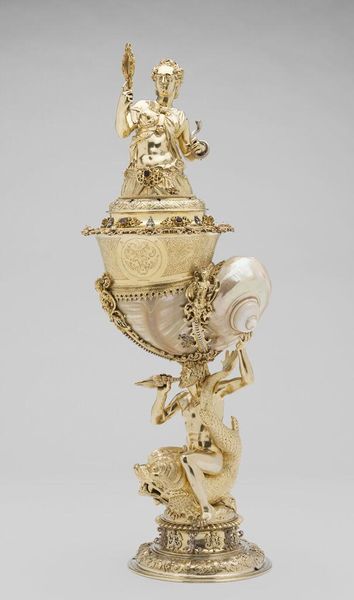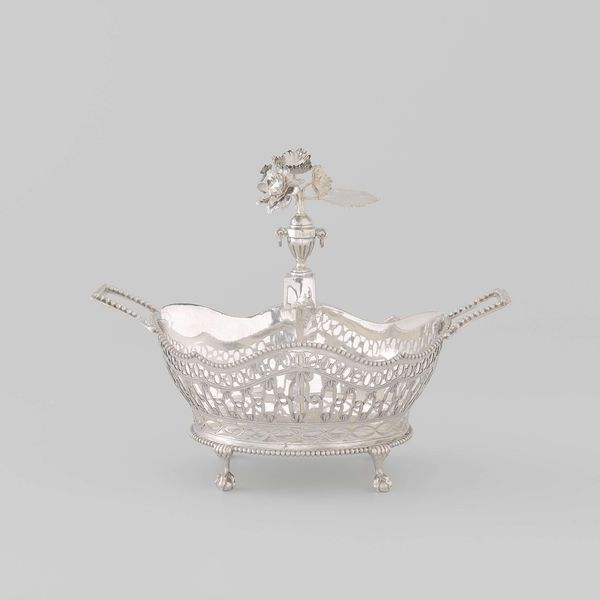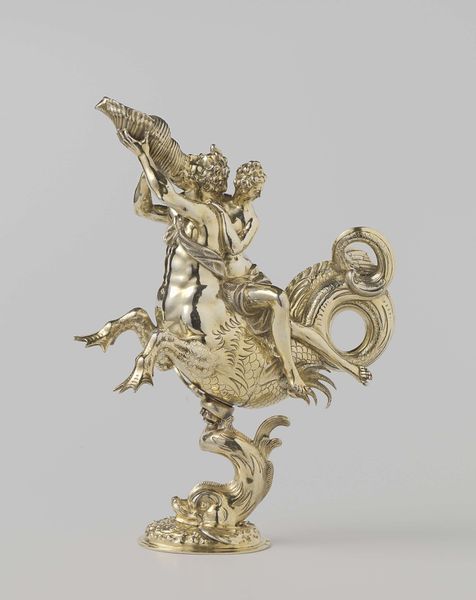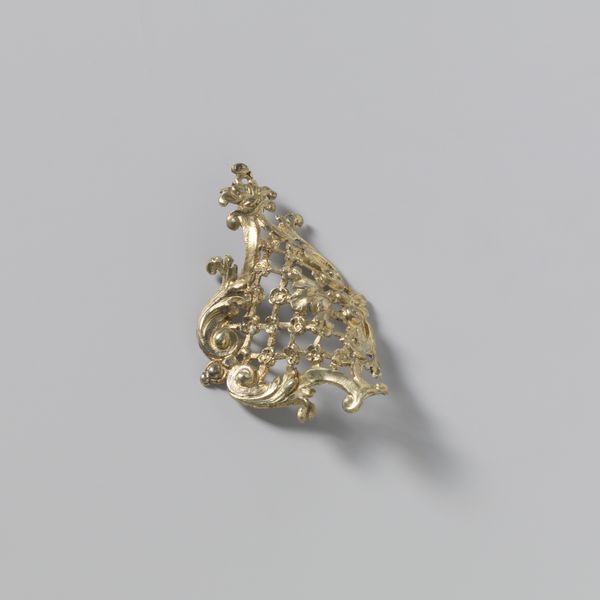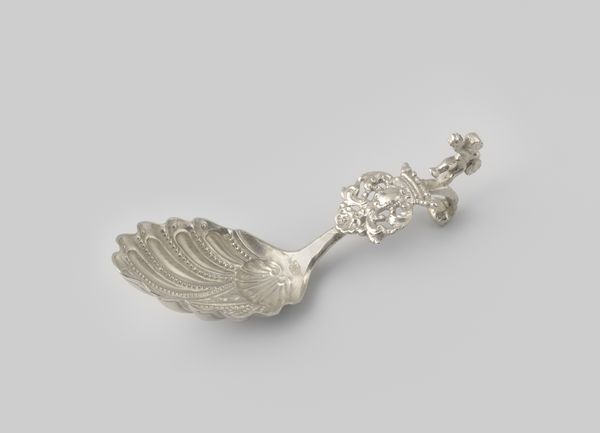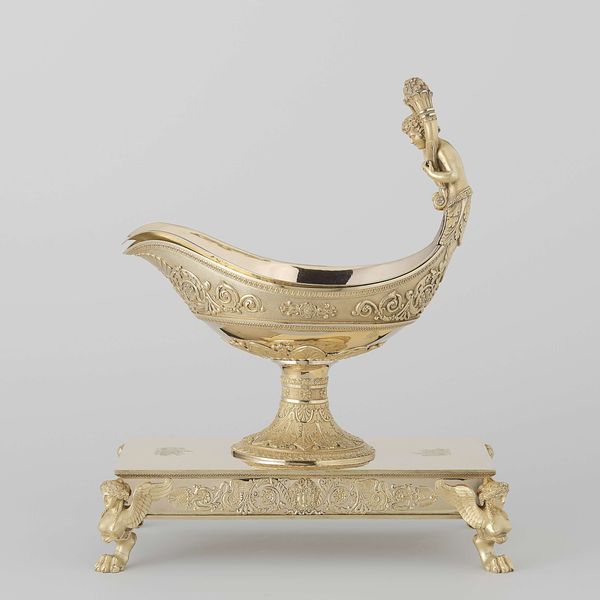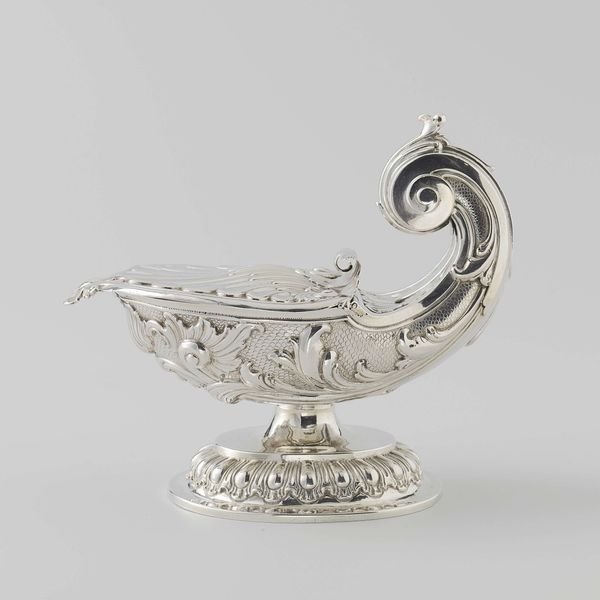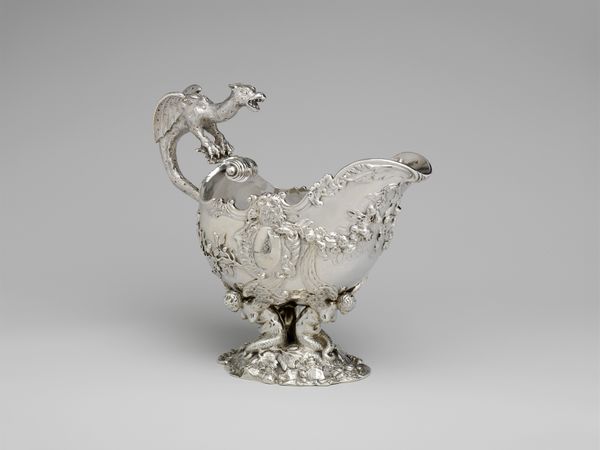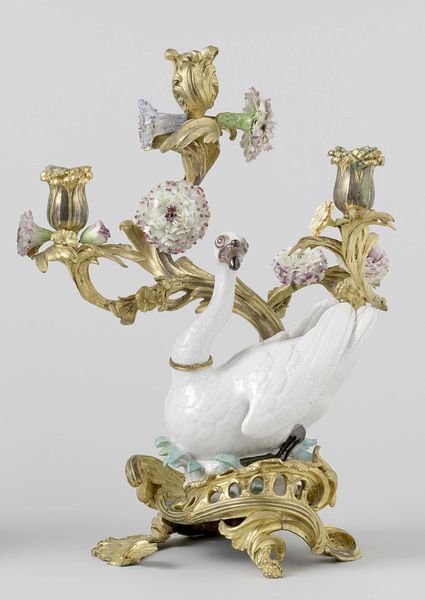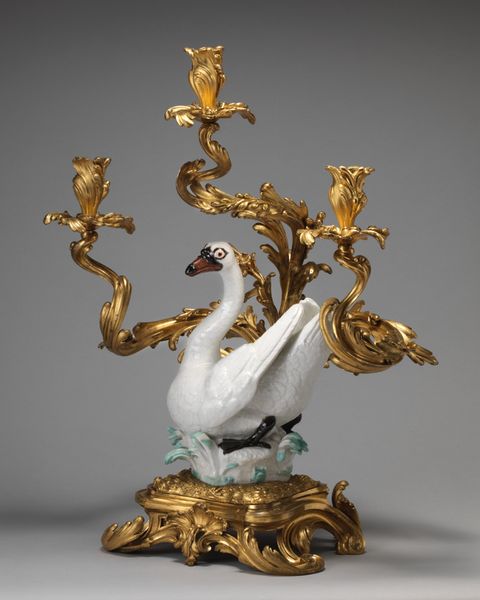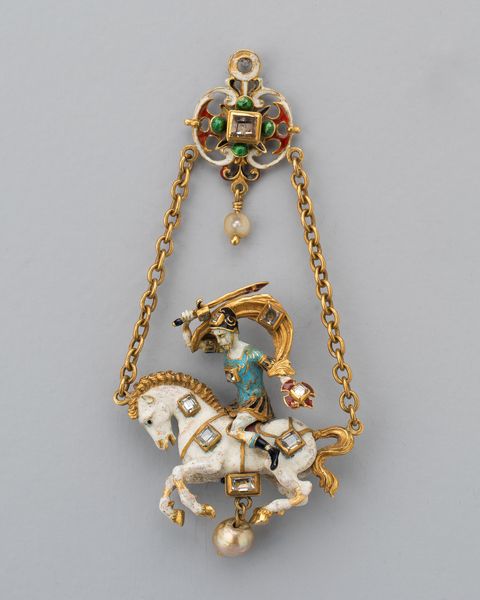
Dimensions: height 9.5 cm, length 13.0 cm
Copyright: Rijks Museum: Open Domain
Editor: We're looking at "Rattle in the Form of a Lion," made in 1778 of gold. It’s delicate and ornate, but there’s also something powerful about rendering the king of beasts in this precious material. What stands out to you? Curator: What I see is the colonial project playing out in miniature. We have this symbol of wild power, the lion, completely tamed and reshaped into a delicate object of European craft and, presumably, desire. What does it mean to take that power – symbolic and literal, given the context of colonialism – and transform it into a trinket? Editor: So you see the rattle not just as a decorative piece, but as a representation of dominance and control? Curator: Absolutely. Consider the period – the height of European expansion and exploitation. A golden lion rattle speaks volumes about the relationship between the colonizer and the colonized, the subjugation of indigenous power and resources. And who was this rattle made for? Who benefitted from this transformation of power? Editor: It makes you wonder about the original goldsmith too. What was their relationship to this object, and perhaps to the idea of empire itself? Curator: Exactly! Was the goldsmith actively complicit in this symbolic domination, or simply creating an object for their patron? These questions invite us to explore the nuances of power at play within the art world and the society it reflects. How do seemingly harmless objects like this become carriers of political and historical meaning? Editor: This has definitely given me a different lens through which to view not only this object but many others like it. It’s about considering what something *represents*, rather than simply what it *is*. Curator: Precisely. Art is never created in a vacuum, and every piece, no matter how small, can offer insights into the complex social, political, and economic forces that shaped its creation.
Comments
rijksmuseum about 2 years ago
⋮
Gold filigree is the craft of forming delicate patterns with thin wire and tiny beads of gold. This was a Dutch speciality. Certainly from 1650 nearly all cities in the Netherlands had one or more goldsmiths specialized in this complex technique. This rattle demonstrates that they were capable of making animal figures. The more fragile parts, such as the flute and the bells, are fashioned of little gold plates.
Join the conversation
Join millions of artists and users on Artera today and experience the ultimate creative platform.

